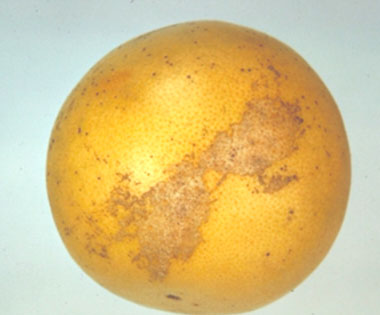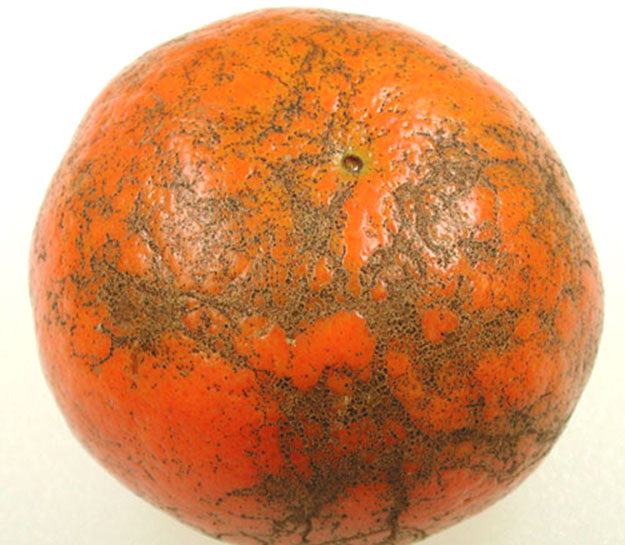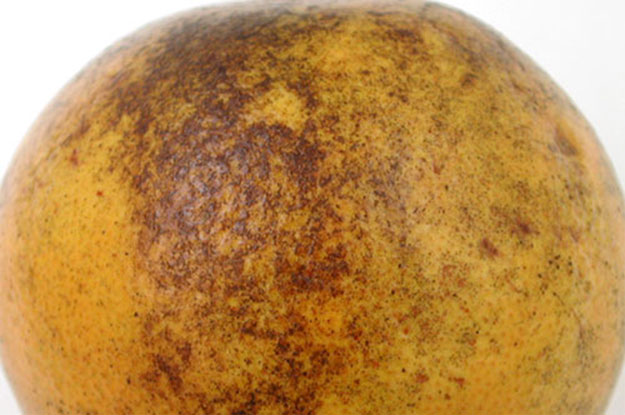“You can’t score defects on Florida Citrus!” I am sure everyone has heard this at one time or another. Is it true? Can you never score defects on Florida Citrus? Not really. Whether you are inspecting Oranges and Tangelos, Grapefruit or Tangerines from Florida, they will not be as clean in appearance as citrus from California, but even though some surface scarring is typical of Florida Citrus, you can still score defects. Oil spots, skin breakdown, rough scarring, decay, just to name a few, are still considered as being defects.
The following images show defects on Florida Citrus, that are virtually not a factor.

Smooth Scars

Melanose

Rust Mite
These are the defects, that if you come across, may not be a grade factor, in determining if the load is in grade or out of grade. Smooth scars, are scars that are smooth to the touch, not being rough; melanose, a defect caused by a fungus; and rust mite, a defect caused by a small wedge-shaped arachnid, about 1/200 inch, have specific tolerances. These three defects are called “Excessive Discoloration.”
To determine if you have a problem with these three, first you have to determine if over a third of the surface is affected by a smooth scar, melanose, or rust mite. If the area affected does exceed 33% of the surface then that specimen is set aside as a defect. But you are allowed an additional 10% of the fruit having these defects. In addition to rough scars, skin breakdown, oil spots, insect damage, decay…….you are allowed a separate 10% tolerance of fruit with the excessive discoloration.
So, should you worry about these surface scars? Most USDA inspectors ignore the excessive discoloration, unless the discoloration is so bad they have no choice but to go through the exercise of looking at each fruit and determine if over 33% of the surface is affected by this discoloration. But remember, even if you do find the smooth scars, melanose or rust mite affecting more than 33% of the surface, the standard still allows for up to 10% of the fruit with this scoreable discoloration.

No Comments on “Florida Citrus- Discoloration”